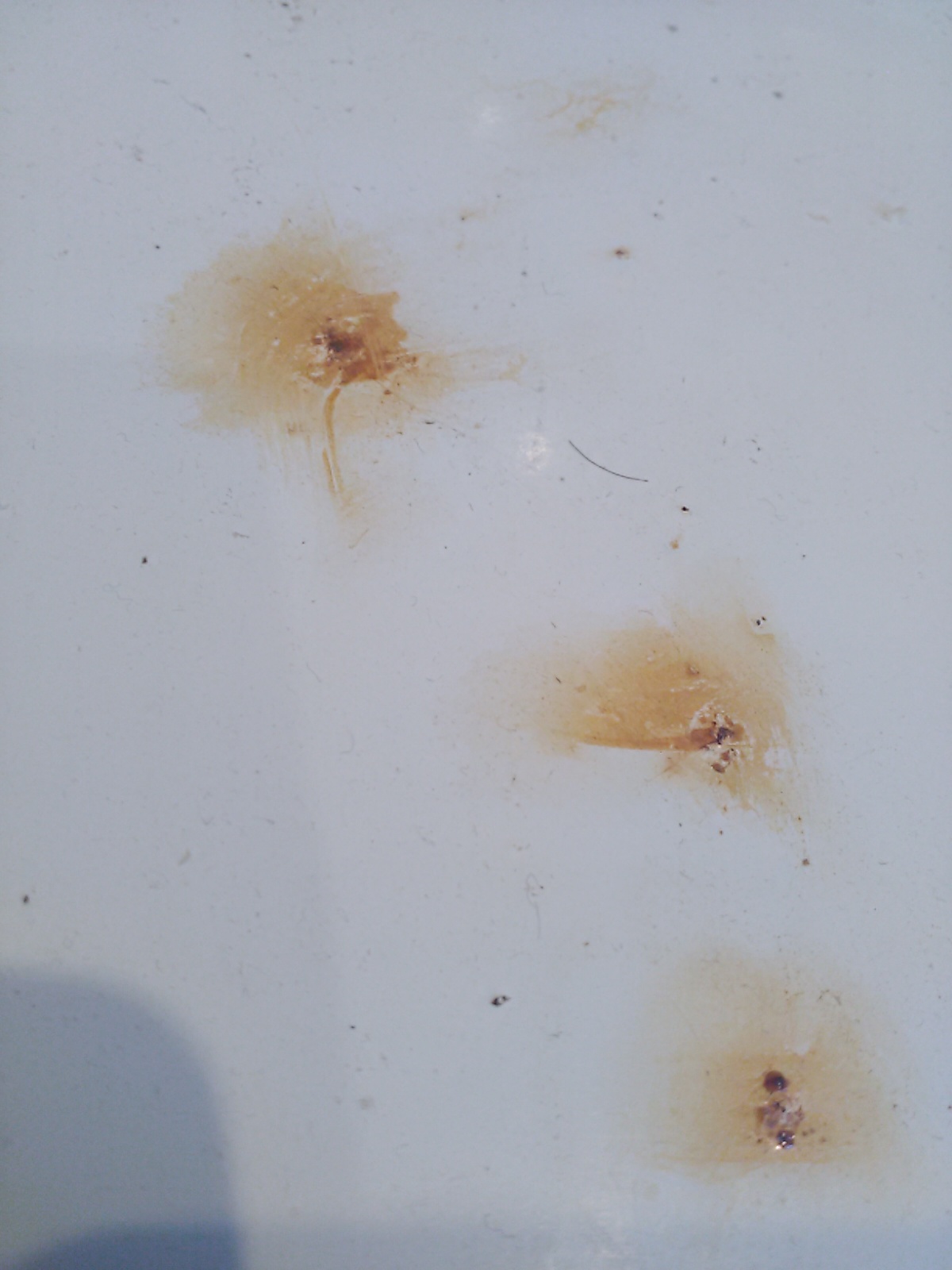It does not wipe off with a rag. I have some proprietary rust stain removal liquid, which I think is intended for when rust gets on fabric. But I guess I’ll try it on these spots. Otherwise I’m left with some kind of abrasive approach.
plantteacher
There is a quite useful PDF version for printing. As I was saving the PDF, I noticed I had already saved that PDF before.
If you’re able to smell the products of the bacteria,
Your phrasing implies that the bacteria itself is odorless and that any new odor (other than what cooked turkey normally smells like) is entirely borne from bacteria output. Is that correct?
The food was sealed so odor builds. Upon opening the bag I get a full strength dose of the odor -- which is gone if I miss the opportunity to do the instant sniff. What plays tricks with my mind is the fact that sometimes an odor is just a stronger dose of the normal food odor. But as something rots there is a gradual subtle increase in new odors that makes it hard to know. I have always lived on the edge in this regard and consume borderline cases where it’s hard to tell. And I have always gotten away with it.. never had food poisoning.
In any case, the turkey odor clearly had some wrong odors so I opted to freeze it to use as rat bait the next time rats invade the house (along with a frozen raw beef steak where I was also too slow to consume). I now have enough rat bait to take on 100+ rats. And what I’ll probably find is that the rats are smart enough to avoid it.
I’d be quite happy to make soup with it. After re-roasting and boiling it, the foul odor is gone. I’m sure it would taste fine.
But some people seem convinced it cannot be salvaged by any process. If it has clostridium perfringens, even if I kill the bacteria in the recook, it would have an exotoxin that would survive any amount of cooking.
I really wish I could have easily tested or know from the odor whether clostridium perfringens was present. The odor could have come from a less dangerous bacteria but I guess it’d be a risky gamble.
In a web search on how long cooked turkey lasts, the results were 3—4 days in the fridge in the first ~20 or so hits. Exceptionally, one deviant article said 5—7 days but I lost track of it.
I regret not vacuum sealing the meat, each piece individually. All was in a big zip lock. On day 1 and day 2 I opened it to pull out a piece, which was more opportunities for contamination. Some sites say there is only a 2 hour window of time to get it into the fridge after the initial cooking. In my case that was probably more like ~6 hours. So I guess I made plenty of mistakes.
I don’t have bacteria phobia, but any sound science on food poisoning risks would be useful.
I just found this article which lists Clostridium perfringens as producing a harmful exotoxin. From there, it would be interesting to know if Clostridium perfringens likes cooked turkey (as opposed to just raw). But without a solid answer on that, I guess I will toss the turkey.
It’s a good approach. But the aluminum I have is part of a whole. A rice cooker inner pot and a wok lid. Maybe I can find a replacement wok lid.
But what about knives? Dishwashers are said to dull knives. So far I only buy middle of the spectrum chef’s knives (~<$60) so abusing them isn’t a big deal. But that means I give up the benefit of a sharp knife that keeps a long-lasting edge. If I buy high-end (which likely runs a few hundred $), then it’s a bit wasteful to abuse it in the dishwasher. I suppose there are some things that I have to accept as high-maintenance. I wonder what pro chefs do.
They spoiled:
- red kale
- fermented fruit juice
- fermented strawberry jam
- pumpkin jam
- sourdough
but it’s unclear which led to possible benefits. With jams I would just scoop out the unexpected organisms and eat the rest. Maybe that’s not even necessary.
And bats, which pollenate agave, which makes them important to tequila production. So I do have to retract what I said about mosquitos having no benefit.
I suppose the response is to give them links to mosquito repellents and mosquito nets.. tell them they are still in control.

I struggle to believe water pooled up enough to carry stuff. Condensation is possible perhaps to the extent of having some invisible amount of sweat. Unless there were puddles that formed and evaporated before I saw it. Though it’s a short fridge. The top of it is at eye level so I see the top every day.
Here’s another pic: